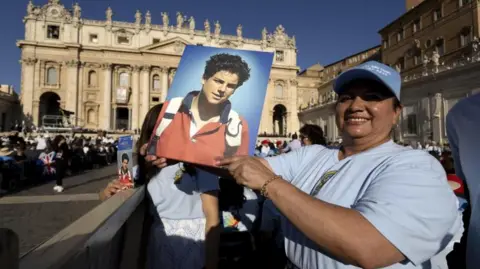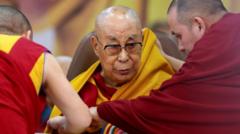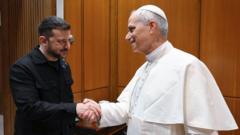Beginning this Wednesday, the prestigious conclave in Vatican City will commence, marking the start of the church's search for a new pope following the passing of Pope Francis at age 88 last month. A total of 133 cardinals from around the globe will gather within the Sistine Chapel, surrounded by Michelangelo's stunning frescoes, to participate in this secretive yet politically charged election.
As they sequester themselves behind closed doors, a required two-thirds majority vote will determine the successor to the late pontiff, an enigmatic process rife with intrigue. Commentary from Jason Horowitz, the Rome bureau chief for The New York Times and a veteran of previous conclaves, highlights the behind-the-scenes machinations at play, stating, “It has pure politics, with backstabbing, and throwing people under the bus.”
The cardinals will have the opportunity to cast their votes up to four times daily, producing either black smoke – indicating no decision has been made – or white smoke, which announces that a new pope has been elected. The length of the conclave can vary dramatically, ranging from a matter of hours to an extensive three years, as evidenced by historical precedents.
Once white smoke is released, The Times aims to provide immediate coverage on their homepage, detailing the new pope’s identity and the theological perspectives they may bring to the role. “We try to be prepared,” Horowitz explained, regarding potential unanticipated candidates that may arise.
As they sequester themselves behind closed doors, a required two-thirds majority vote will determine the successor to the late pontiff, an enigmatic process rife with intrigue. Commentary from Jason Horowitz, the Rome bureau chief for The New York Times and a veteran of previous conclaves, highlights the behind-the-scenes machinations at play, stating, “It has pure politics, with backstabbing, and throwing people under the bus.”
The cardinals will have the opportunity to cast their votes up to four times daily, producing either black smoke – indicating no decision has been made – or white smoke, which announces that a new pope has been elected. The length of the conclave can vary dramatically, ranging from a matter of hours to an extensive three years, as evidenced by historical precedents.
Once white smoke is released, The Times aims to provide immediate coverage on their homepage, detailing the new pope’s identity and the theological perspectives they may bring to the role. “We try to be prepared,” Horowitz explained, regarding potential unanticipated candidates that may arise.





















